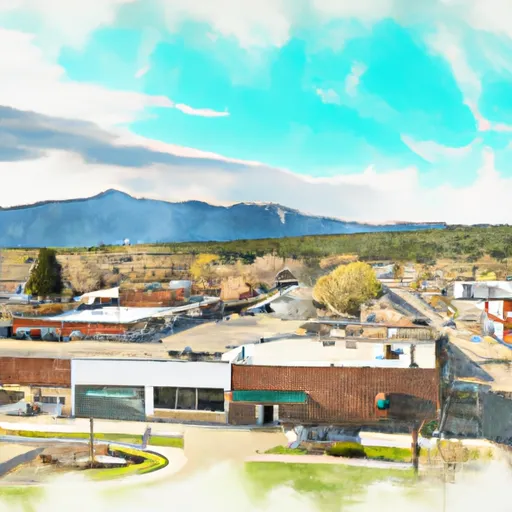-
 Snoflo Premium
Snoflo Premium
Get unlimited access to all our content
With no Ad interruptions! - Start Your Free Trial Login with existing account
Utica
Eden Index
Climate
6.8
•
Recreation
4.1
•
Community
•
Safeguard
4.2/10

Utica, Montana is a small town located in central Montana, nestled within the stunning Big Snowy Mountains. The climate in Utica is characterized by cold winters and mild summers. Winters are long and snowy, with temperatures often dropping below freezing, while summers are pleasant and ideal for outdoor activities.
The hydrology in Utica is mainly dominated by natural springs and creeks that flow from the surrounding mountains. These water sources not only provide picturesque beauty but also support a diverse ecosystem of wildlife and vegetation.
Outdoor enthusiasts will find plenty of recreational opportunities in Utica. The Big Snowy Mountains offer endless possibilities for hiking, mountain biking, and camping during the summer months. Wildlife enthusiasts can spot a variety of species, including elk, mule deer, and various bird species.
During the winter, Utica becomes a haven for snow sports enthusiasts. The nearby mountains transform into a winter wonderland, offering excellent opportunities for skiing, snowboarding, snowshoeing, and even snowmobiling.
Overall, Utica, Montana provides a beautiful natural setting with a diverse climate, abundant hydrology constituents, and numerous outdoor recreation opportunities for nature lovers and adventure seekers.
What is the Eden Index?
The Snoflo Eden Index serves as a comprehensive rating system for regions, evaluating their desirability through a holistic assessment of climate health, outdoor recreation opportunities, and natural disaster risk, acknowledging the profound impact of these factors on livability and well-being.
Climate Health Indicator (CHI): 6.8
Utica receives approximately
454mm of rain per year,
with humidity levels near 69%
and air temperatures averaging around
6°C.
Utica has a plant hardyness factor of
4, meaning
plants and agriculture in this region thrive during a short period during spring and early summer. Most
plants will die off during the colder winter months.
By considering the ideal temperature range, reliable water supplies, clean air, and stable seasonal rain or snowpacks, the Climate Health Indicator (CHI) underscores the significance of a healthy climate as the foundation for quality living.
A healthy climate is paramount for ensuring a high quality of life and livability in a region, fostering both physical well-being and environmental harmony. This can be characterized by ideal temperatures, reliable access to water supplies, clean air, and consistent seasonal rain or snowpacks.
Weather Forecast
Streamflow Conditions
Fort Peck Lake
Area Rivers
Fort Peck Lake
Snowpack Depths
Fort Peck Lake
Reservoir Storage Capacity
Fort Peck Lake
Groundwater Levels
Recreational Opportunity Index (ROI): 4.1
The Recreational Opportunity Index (ROI) recognizes the value of outdoor recreational options, such as parks, hiking trails, camping sites, and fishing spots, while acknowledging that climate plays a pivotal role in ensuring the comfort and consistency of these experiences.
Access to outdoor recreational opportunities, encompassing activities such as parks, hiking, camping, and fishing, is crucial for overall well-being, and the climate plays a pivotal role in enabling and enhancing these experiences, ensuring that individuals can engage in nature-based activities comfortably and consistently.
Camping Areas
| Campground | Campsites | Reservations | Toilets | Showers | Elevation |
|---|---|---|---|---|---|
| Judith Station | 3 | 5,002 ft | |||
| Ackley Lake State Park | 25 | 4,318 ft | |||
| Selkirk FAS | 5 | 4,648 ft | |||
| Martinsdale Reservoir FAS | 11 | 4,791 ft | |||
| Hay Canyon | 9 | 5,171 ft | |||
| Indian Hill | 7 | 5,120 ft | |||
| Judith River State WMA | None | 5,184 ft | |||
| Jellison Place | 10 | 5,829 ft |
Catastrophe Safeguard Index (CSI):
The Catastrophe Safeguard Index (CSI) recognizes that natural disaster risk, encompassing floods, fires, hurricanes, and tornadoes, can drastically affect safety and the overall appeal of an area.
The level of natural disaster risk in a region significantly affects safety and the overall livability, with climate change amplifying these risks by potentially increasing the frequency and intensity of events like floods, fires, hurricanes, and tornadoes, thereby posing substantial challenges to community resilience and well-being.
Community Resilience Indicator (CRI):
The Community Resilience Indicator (CRI) recognizes that education, healthcare, and socioeconomics are crucial to the well-being of a region. The CRI acknowledges the profound impact of these elements on residents' overall quality of life. By evaluating educational resources, healthcare accessibility, and economic inclusivity, the index captures the essential aspects that contribute to a thriving community, fostering resident satisfaction, equity, and social cohesion.

